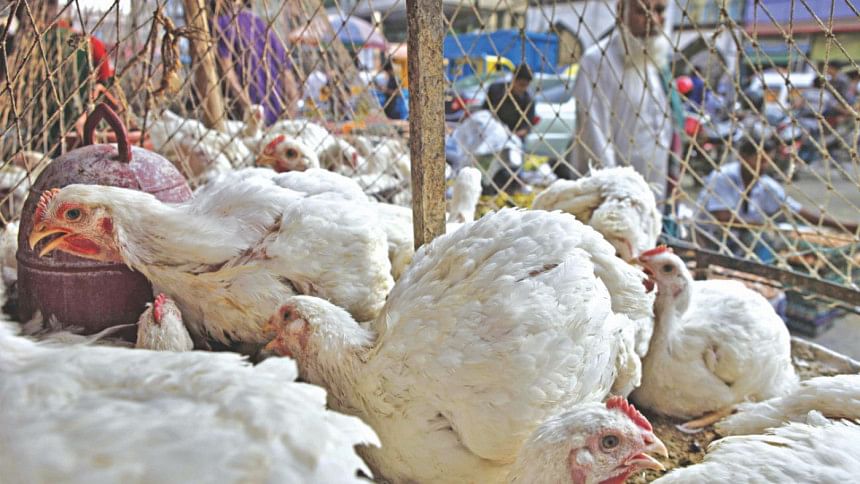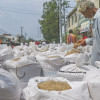Broiler Chicken: ‘It poses no health risk’

Agriculture Minister Abdur Razzaque yesterday said there was no health risk in consuming broiler chicken, as the levels of antibiotic and heavy metal found in its meat was much lower than the permissible limit.
Broiler chicken meat, bones and composites mainly contain trace amounts of two antibiotics (oxytetracycline and doxycycline) and three heavy metals (arsenic, chromium and lead), which is not unusual, he said while disclosing findings of a research conducted by Bangladesh Agriculture Research Council (BARC).
He added, "Furthermore, the levels were far below the maximum acceptable level."
Mohammad Rafiqul Islam, chief scientific officer (livestock division) of BARC, led the research conducted between January and June, 2022.
The BARC ran tests on 315 samples of 1,200 broiler chickens and poultry feed, collected from five district towns, to examine the presence of 10 antibiotics and three heavy metals, said Razzaque at the press briefing, organised at the Press Information Department at the Secretariat.
Of the 10 antibiotics, seven were sent to SGS Laboratory in Chennai of India for examination.
These are Enrofloxacin, Ciprofloxacin, Neomycin, Tylosin, Cholystine, Amoxycillin and Sulfadiazine.
Three others -- Chloramphenicol, Oxytetracycline and Doxycycline -- were tested at a laboratory of the Department of Livestock in Savar.
"No presence of the seven antibiotics that were sent to India for testing were found in broiler chickens," Rafiqul told the Daily Star.
The BARC found the presence of two antibiotics, oxytetracycline and doxycycline, and three leads -- arsenic, chromium and lead -- in the meat, which is far below the maximum residue limit (MRL).
The MRL is the maximum amount of pesticide or other chemical residue that is expected to remain in food products when a pesticide is used according to label directions. If the MRL is maintained, that food will not be a concern to human health.
For instance, the presence of Oxytetracycline in the chickens was found to be eight micrograms per kg, while the MRL is 100 micrograms per kg.
The presence of Doxycycline was 9.1 micrograms per kg, while the MRL for that is also 100 micrograms per kg.
"Just like the people of the country use paracetamol for cold or light fever, many poultry farmers use these antibiotics frequently … Representatives of some medicine companies also prescribe poultry farmers to use these," Rafiqul said.
The department concerned should take measures to discourage the practice and bring the use of antibiotics down to zero, he said, adding that excessive use of antibiotics in poultry can make the consumers become resistant to it.
The levels of antibiotics and lead in the chicken's bones, liver and kidney were also found to be lower than the MRL.
Responding to a question, Rafiqul said the government should strictly monitor the market to prevent unscrupulous businesses from cashing in on the research findings and misusing it for business profit.
Earlier at the press briefing, Razzaque brushed aside the concept of using tannery waste in poultry feed.
"The yearly demand for poultry feed is about 95 lakh tonnes, whereas only 85,000 tonnes of tannery waste is generated per year. Compared to the demand, the tannery waste is insignificant," he said.
Dr Sitesh Chandra Bachar, professor of Dhaka University's pharmacy department, suggested bringing down the use of antibiotics further.
"Farmers use it for the good growth of poultry, but we also have to consider its negative impacts on human health," he said, adding, "The amount that is found is not significant but the authorities concerned should increase monitoring so that its arbitrary use can be stopped."

 For all latest news, follow The Daily Star's Google News channel.
For all latest news, follow The Daily Star's Google News channel. 








Comments